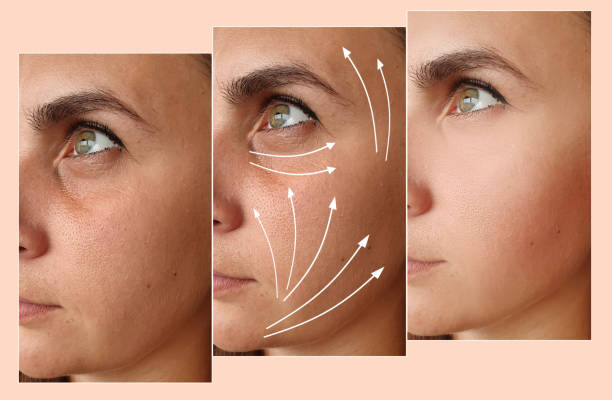With annual revenues soaring to $3.8 billion—a 23% jump from 2023—this sector has transcended niche beauty treatments to become a mainstream wellness necessity. Here’s an in-depth look at the forces driving this revolution and what they mean for consumers and industry players alike.
Market Dynamics: A $3.8 Billion Ecosystem of Innovation
The laser therapy market’s exponential rise is marked by more than just revenue figures. Across America, urban hubs like Miami and Chicago are witnessing a 40% annual increase in specialized laser clinics, now totaling over 12,500 nationwide. This surge is fueled by a dual demand: baby boomers seeking non-surgical rejuvenation and Gen Z prioritizing preventive skin health. Notable trends include:
- The "Zoom Effect": Post-pandemic, 62% of consumers cite video conferencing as a catalyst for investing in laser treatments like fractional resurfacing.
- Medical Aesthetics Integration: Hospitals and dermatology practices are incorporating laser therapies, with Cleveland Clinic’s new Laser Wellness Center serving as a trailblazer.
- Regional Hotspots: Sunbelt states like Arizona and Florida lead in laser hair removal demand, while tech hubs like Seattle favor non-invasive skin tightening procedures.
Technological Leap: From Precision to Personalization
2025’s technological breakthroughs are redefining what’s possible in laser therapy:
1. AI-Driven Treatment Mapping
Clinics now use AI algorithms to analyze skin scans and generate personalized laser protocols. For example, New York’s SkinLaseMD employs machine learning to tailor fractional laser settings, reducing treatment times by 30% while enhancing scar reduction outcomes by 45%.
2. Hybrid Laser Systems
The launch of dual-wavelength lasers, such as the Cutera Enlighten III, has revolutionized pigmentation treatment. This technology combines 1064nm and 532nm wavelengths to fade tattoos and melasma in 4-6 sessions, compared to 8-10 sessions with older models.
3. Wearable Laser Devices
At-home laser tools are gaining traction, with brands like DermaWand releasing FDA-cleared devices for fine lines. While these cost $300-500, they offer convenience—though professionals warn they lack the potency of clinical machines.
Consumer Behavior: The Rise of Informed Beauty Seekers
A 2025 survey by the American Society for Laser Medicine & Surgery reveals:
- 78% of consumers research laser technologies on social media before booking, with TikTok challenges like #LaserTransformation reaching 1.2 billion views.
- Men’s market growth: Male clients now account for 34% of laser hair removal bookings, up from 18% in 2020, driven by influencers and sports stars.
- Sustainability concerns: 56% prefer clinics using eco-friendly laser systems that minimize energy consumption, leading to the rise of "green laser" certifications.
Competitive Frontiers: From Chains to Boutiques
The market’s competitive landscape is evolving rapidly:
- Corporate consolidation: Industry giants like European Wax Center are acquiring laser chains, with 2025 seeing 17 major mergers. This allows them to offer bundled services like laser hair removal + Botox at 20% discounts.
- Niche specialization: Boutique clinics are thriving by focusing on unique services, such as:
- Subscription models: Clinics like LaserLuxe offer monthly memberships ($99-199) for unlimited basic treatments, attracting budget-conscious consumers.
FAQ: Navigating the Laser Therapy Landscape
Is laser treatment safe for all skin tones?
Advancements like the Alexandrite laser now make treatments safe for Fitzpatrick skin types IV-VI, though patch tests remain essential. Clinics must display their equipment’s skin type compatibility, per new FDA guidelines.
How do laser facials compare to chemical peels?
Laser facials (e.g., CO2 resurfacing) offer deeper collagen stimulation but require 5-7 days of downtime. Chemical peels are milder, ideal for monthly maintenance, but struggle with severe scarring.
Can lasers treat active acne?
Yes—blue-light laser therapy kills acne-causing bacteria, with the Clear + Brilliant system showing a 65% reduction in breakouts after 3 sessions. Combine with topical retinoids for best results.
Future Outlook: Where Innovation Meets Inclusion
As the industry matures, three trends will define 2025-2030:
- Telehealth integration: Virtual consultations for laser treatment planning are expected to grow 200%, with apps like LasePlan offering AI-driven pre-treatment simulations.
- Regulatory shifts: The FDA is set to approve the first over-the-counter laser device for at-home use, though professionals warn of misuse risks.
- Cultural inclusivity: Clinics are hiring more diverse staff and offering treatments tailored to ethnic skin, such as laser hair removal for coarse hair textures.
For consumers, due diligence remains key: verify a clinic’s accreditation, ask for before-and-after photos, and prioritize providers using FDA-approved lasers. For businesses, investing in staff training and sustainable technologies will be the cornerstone of long-term success. The future of laser therapy is not just about looking good—it’s about feeling confident in a treatment that’s as advanced as it is accessible.

